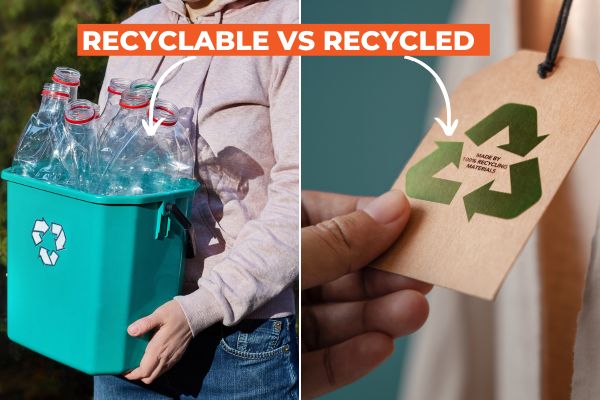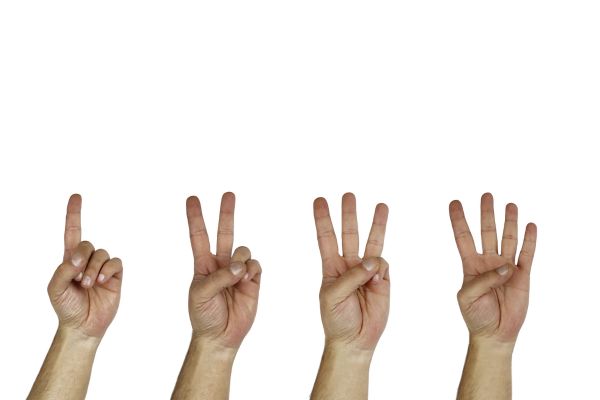In the global pursuit of sustainability, terms like “recyclable” and “recycled” often dominate conversations about responsible waste management and responsible choices. However, these terms are not interchangeable, and understanding the difference is crucial for making informed decisions that contribute to a greener future. Below, we explain recyclable vs recycled and delve into the difference.
What’s The Difference Between Recyclable And Recycled
RECYCLABLE: The Promise of a Second Life
A recyclable item is designed in a way that allows it to enter the recycling stream, where it can be transformed into raw materials for the production of new goods. Common examples of recyclable materials include certain plastics, glass, paper, and metals. When a product or material is labeled as “recyclable,” it means that, in theory, it has the potential to be collected, processed, and remanufactured into a new product. The emphasis here is on potential.
But it’s important to understand that the term “recyclable” doesn’t guarantee that an item will be recycled or that it will even enter the recycling process. It merely suggests that the material used in the product is technically capable of being recycled.
While an item may be technically recyclable, its acceptance in certain areas depends on various factors. These include the absence or limitations of recycling infrastructure, economic considerations, contamination concerns, logistical challenges, and market demand for recycled materials.
This often confuses people when an item is labeled recyclable, but it’s not accepted in their local area. A good example is a yogurt tub made from plastic number 5, polypropylene. Polypropylene is technically recyclable; in fact, it is successfully recycled in many locations. Unfortunately, for various reasons, many locations do not accept any plastic number 5 items.
An item being “Recyclable” is a good thing, but you must always check with your local curbside or drop-off services before disposing of it.
RECYCLED: Breathing New Life into Old Materials
On the other hand, when a product or material is labeled as “recycled,” it means that it has already been through the recycling process, collected, processed, sorted, and transformed into new products. Recycled materials serve as an excellent illustration of the circular economy—a system where resources are reused, reducing the demand for new raw materials and minimizing waste.
Conversely, if a material or product is marked as “recycled,” it indicates that it has already undergone the recycling procedure, which includes collection, processing, and sorting, and the resulting material has been transformed into new products.
Recycled products can take various forms, from recycled paper and plastic to reclaimed metals and glass. These items contribute significantly to resource conservation and waste reduction by giving a second life to materials that might otherwise end up in landfills.
RECYCLABLE VS RECYCLED: A clear comparison
Recyclable
has the potential to be collected, processed, and remanufactured into a new product
Recycled
has been through the recycling process and made into a new product
It’s important to understand that recyclable products are not necessarily recycled and can be either recycled or not recycled. Also, recycled products may or may not be recyclable.
The two terms are not interchangeable. Recycled products are not necessarily recyclable, and recyclable products are not necessarily recycled.
Let me explain further. You might have an item like a milk bottle which is usually made from HDPE plastic. This type of plastic is RECYCLABLE and is commonly accepted in curbside programs (let’s assume for simplicity that it’s accepted in your local area). There are several possibilities:
- The milk bottle is made from recycled plastic, plastic that’s already been processed; therefore, it is both RECYCLABLE and RECYCLED.
- The milk bottle is made from virgin or new plastic, making it RECYCLABLE but NOT RECYCLED.
Recyclability is a complex process influenced by various factors, as discussed above. Just because material has been recycled once does not mean it can be recycled again. The material that has been recycled may be used differently or mixed with other materials, rendering it non-recyclable. Sometimes, this is referred to as downcycling. There are also situations when the quality of the material is no longer good enough for it to go through the recycling process.
Below is a diagram that demonstrates the relationship between recyclable and recycled products.
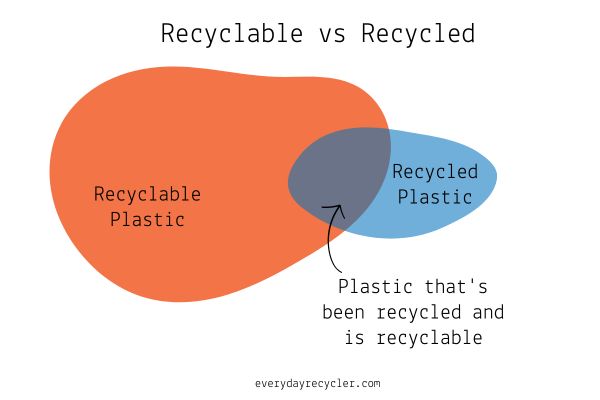
The Challenges of Recyclability
The Lifecycle of Recycling: From Collection to Repurposing
The journey from recyclable to recycled involves several key stages. It begins with the collection of recyclable materials from households, businesses, and public spaces. Once collected, these materials are transported to recycling facilities, where they undergo sorting and processing. This step is crucial, as it ensures that materials are separated by type and contaminants are removed.
Following sorting, the materials are cleaned and prepared for reprocessing. Depending on the material, this may involve shredding, melting, or breaking it down into smaller components. The resulting raw materials are then used to manufacture new products, completing the cycle.
The Challenges of Recyclability
While the concept of recyclability holds promise for a more sustainable future, it comes with its own set of challenges. One major issue is contamination. If recyclable materials are mixed with non-recyclable items or those with incompatible recycling codes, the entire batch may be rendered unrecyclable. This underscores the importance of proper sorting and disposal practices on the part of consumers.
Moreover, the infrastructure for recycling varies widely across regions and communities. While some areas have advanced recycling facilities capable of processing a wide range of materials, others may lack the necessary resources, leading to limitations in recycling capabilities. This discrepancy can impact the effectiveness of recycling initiatives and the overall success of diverting materials from landfills.
Consumer‘s Roles and Responsibility
The effectiveness of recycling relies heavily on consumer awareness, commitment, and responsible disposal habits. Understanding the difference between recyclable and recycled is the first step towards making environmentally conscious choices. Consumers play a pivotal role in ensuring that recyclable items are disposed of properly, reducing contamination and facilitating the recycling process.
To contribute meaningfully to recycling efforts, individuals can adopt practices such as proper sorting and familiarizing themselves with local recycling guidelines. Consider taking our 10 day Conquer Curbside Recycling Challenge to brush up your skills.
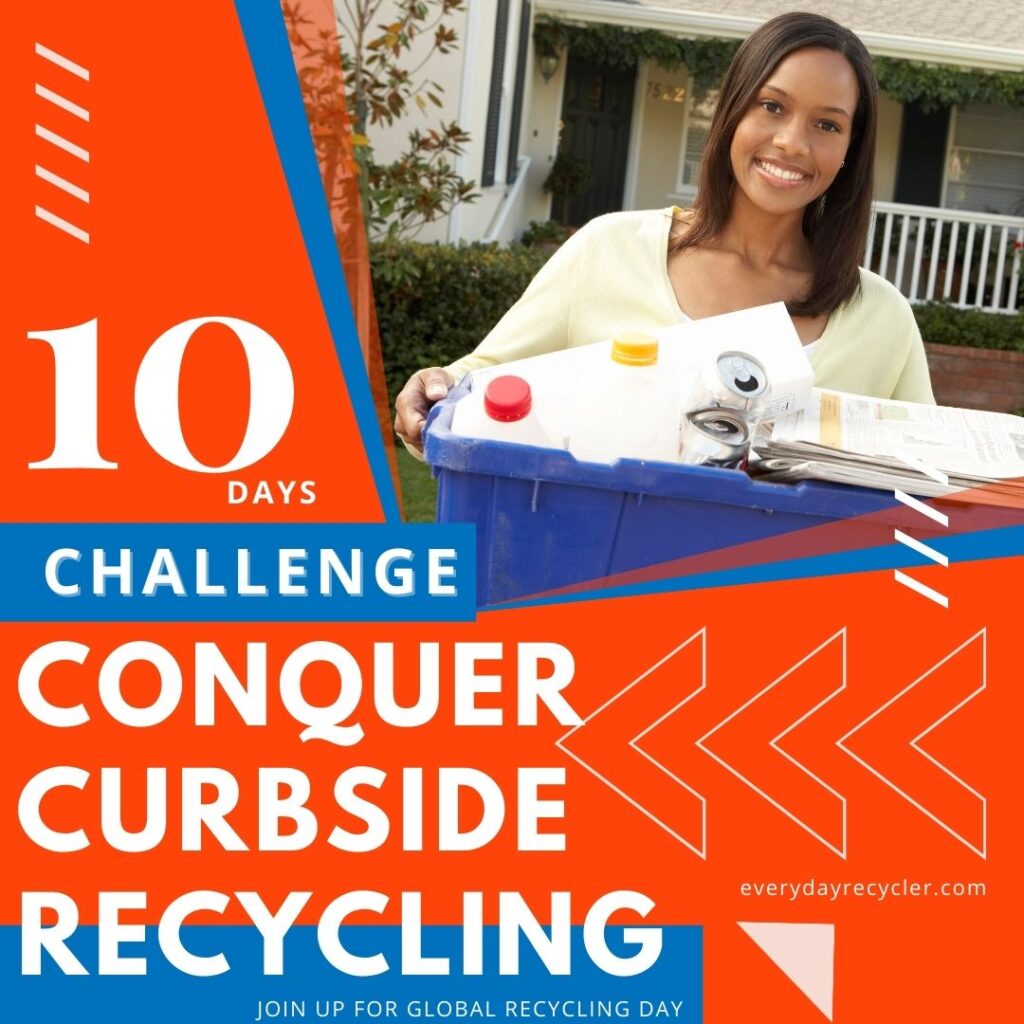
Increasing Sustainable Outcomes: Purchasing Recycled Products
Understanding recyclable vs recycled is a critical thread in sustainability outcomes and the success of recycling. While recyclable items hold the promise of a future transformation, recycled products embody the success of recycling today. Processes that are already creating closed-loop systems that minimize waste and conserve resources.
Choosing recycled products creates demand for the recycled materials market, closing the loop and encouraging a more sustainable approach to consumption.
The best way to find Recycled Products is through our Brand Directory. We highlight brands that are making incredible efforts to use recycled materials.
What labels do you look for when buying recycled products? Products should state something like the following:
- Made from recycled material/content
- Made with recycled plastic
- Made from post-consumer material or pre-consumer material (learn what post-consumer and pre-consumer mean)
Or the item might display one of the following symbols:
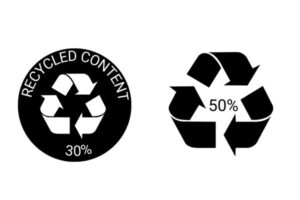
Closing Thoughts: Educating Ourselves For A Better Future
As we navigate the complexities of waste management and environmental preservation, it’s essential to recognize that both recyclability and recycled content are integral components of a holistic approach to recycling and sustainability.
The journey from recyclable to recycled is a shared responsibility. By staying informed, understanding recyclable vs recycled definitions, adopting responsible habits, and advocating for improved recycling infrastructure, individuals can help build a more resilient and successful recycling industry.


